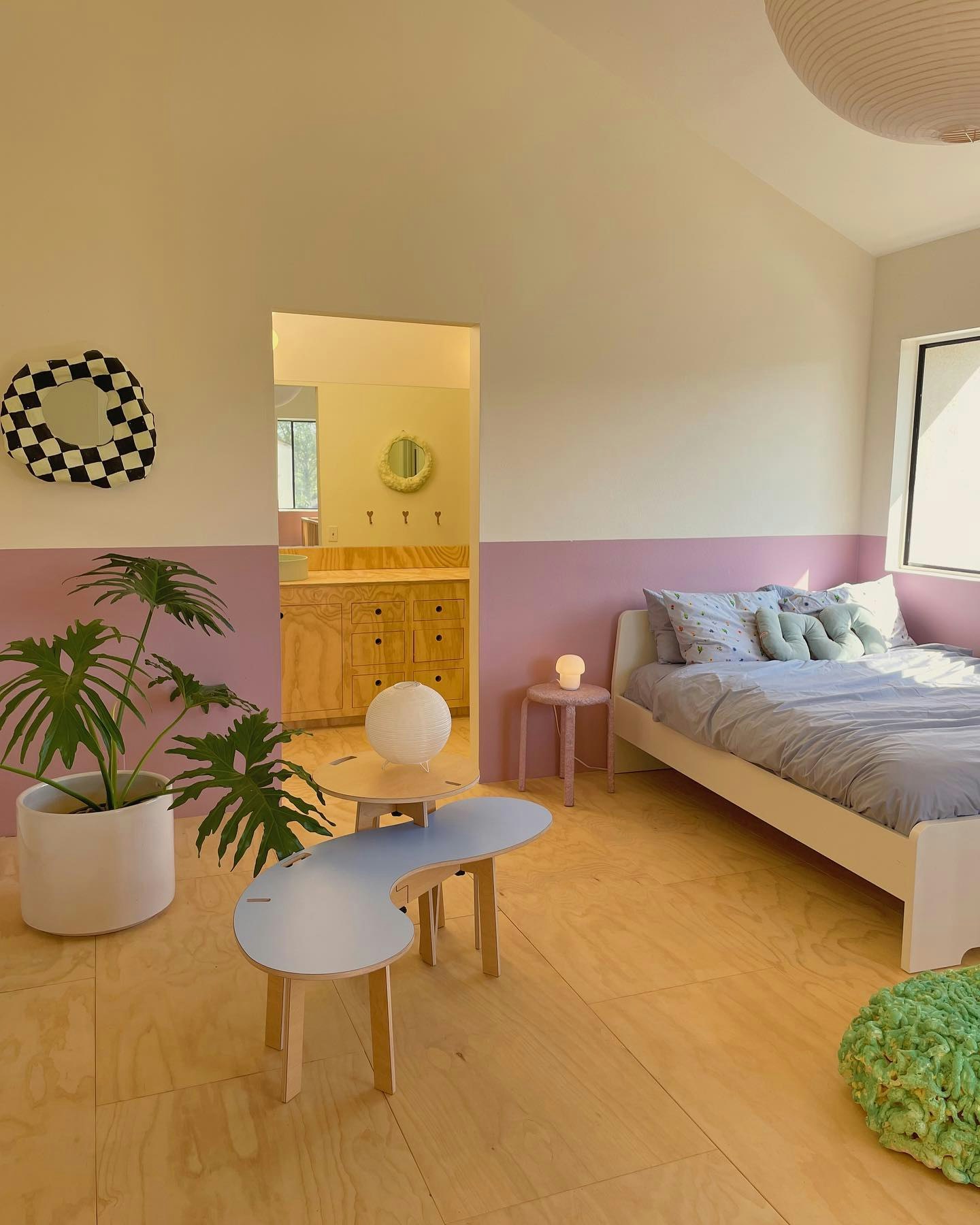5 tips for How to Paint a Room Fast
Whether you’re moving into a new home or want to freshen up an existing space, painting can be one of the easiest and most affordable ways to update your interiors. While many find the idea of painting intimidating, it's really, dare we say, easy if you know the basics. Here are our top 5 essential tips for quickly and expertly painting a room.
Take your time prepping. First things first! Prepping is the most essential part of your paint job. Don’t skip this step! First, protect your furniture by either removing it from the space or covering it. Move it away from any area you need to access, leaving yourself a clear walkway. It can be tempting to skip this step, but paint has a tendency to splatter. Better safe than sorry. Next, wipe down any surface you're planning on painting with a damp cloth. Don't be tempted to break out the paint just yet–before you apply your first coat, it’s crucial that all surfaces are inspected for cracks, holes, dents, or other imperfections. Using some spackle, sandpaper, and a putty knife, fill in any noticeable eyesores. Smooth down any excess spackle after it has completely dried with your sandpaper. Once it is firm to the touch, wipe away any debris with your damp cloth. While it is tempting to immediately jump to painting, ignoring dust, holes, or other imperfections while you prep will cause you more frustration in the long term. Spending the extra few minutes to prep for painting will keep you from regretting that you didn't later.
Invest in your supplies. The higher the quality of your brushes and tools, the better results you will have. Premium brushes and roller covers improve coverage so that you don't waste time and paint on re-application. Likewise, high-end painter's tape and drop cloths will ensure that your paint won’t stray into uncharted territory. We prefer canvas drop cloths to plastic—they're more durable and eco-friendly than their plastic counterparts. If you're new to painting, we recommend investing in your own set of high-quality painting supplies. Even if you're not frequently changing up your paint color, they're a reasonably priced investment that will make painting easier in the short term and be there for any needed touch-ups or future color updates.
Prime! Primer isn’t always necessary, but it can’t hurt. Primer is helpful when prepping surfaces and will increase your paint's longevity. Whether you need to paint a porous surface such as new drywall or untreated wood or cover a much darker color with a lighter shade, primer is a good idea. This is especially necessary for all exterior paint jobs as your exterior paint will experience the highest level of environmental stress.

Start from the top! You've cleaned the walls and any protected furniture. You've filled in any holes with a putty knife and spackle kit, smoothing out any imperfections. Now, you're ready to start painting... Start by using an angled brush to cut in the edges of your ceiling and baseboards. We recommend using a paint roller with an extension feature for ease of use. Attach your roller handle to a paint roller extension pole, allowing you to reach the highest points of the wall (particularly helpful if you don't own a ladder or like both feet on the ground). Detach pieces of the extension pole as you work your way down. By working from top to bottom, you can work right over splatters and drips before they dry.
And Remember: Paint isn’t precious!/Be generous. Saturate your roller enough to provide an even layer of color. Work your way down, being sure to smooth out any uneven layers.
Above all, the most important thing is high-quality paint. Not all paint is created equally. Invest in low odor and low VOC paint with high-quality pigments. Backdrop paints are made with the highest quality resins and pigments and optimized for easy application and storage, making them especially friendly to the DIY painter.


